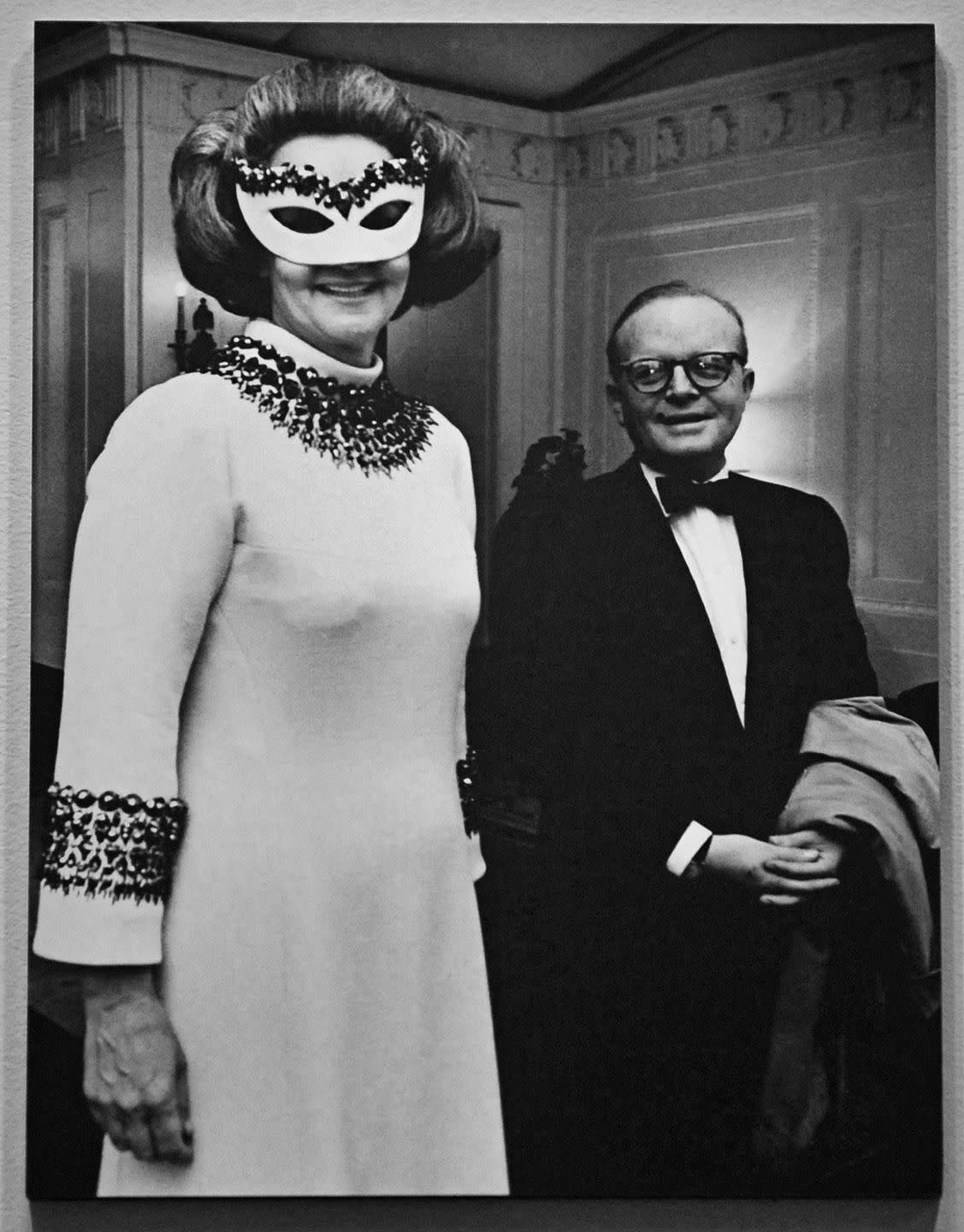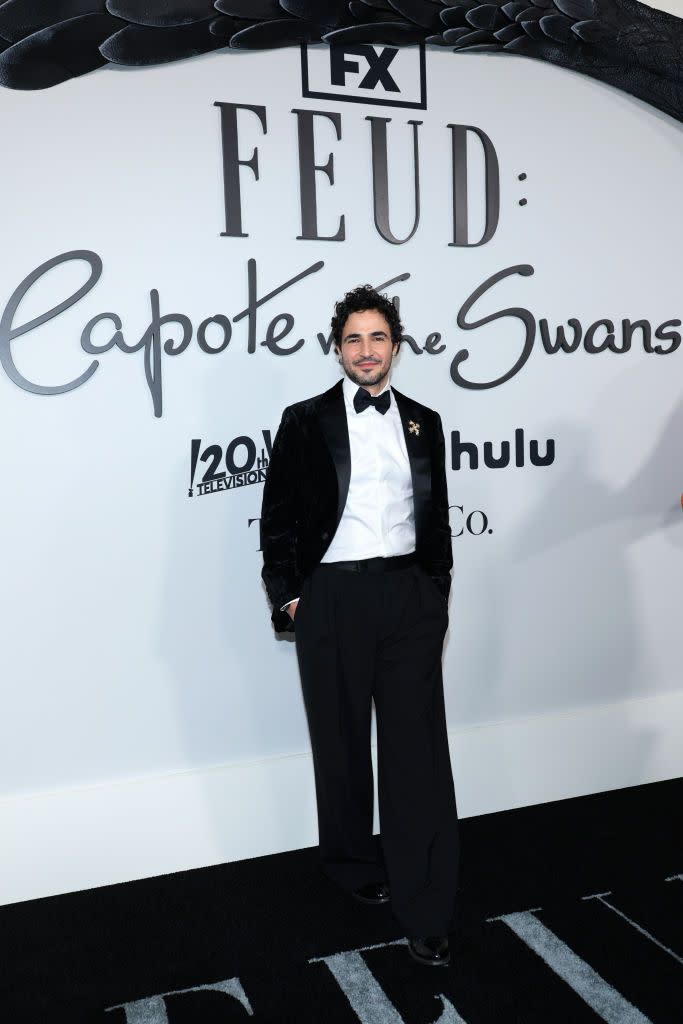How Zac Posen Created the Gowns for Feud's Black and White Ball

"Hearst Magazines and Yahoo may earn commission or revenue on some items through these links."
“I don’t think in my entire life I’ve ever been asked to do more,” says Zac Posen. But he’s discussing creating costumes for Feud: Capote vs. the Swans, specifically the show’s episode depicting the infamous Black and White Ball, and doing that required him going over-the-top—even more so than usual. “This wasn’t about doing a recreation,” he says. “It was about telling an elevated history done with imagination for a modern audience. Ryan Murphy told me, ‘You’re not here to recreate history, and I need more.’”
Nothing about the real-life Black and White Ball—the 1966 party Capote threw at the Plaza Hotel in Manhattan in honor of Washington Post publisher Katharine Graham—was low key. The party drew socialites, celebrities, and political players alike; Andy Warhol was there, so were Rose Kennedy, Tallulah Bankhead, Frank Sinatra, Gloria Vanderbilt, and Harry Belafonte. Princess Luciana Pignatelli wore a 60-carat diamond in her hair, Peter Duchin’s band played, and guests were treated to midnight servings of chicken hash and spaghetti. Deborah Davis’s excellent book about the evening hits the nail on the head with its title: Party of the Century.

For the episode, Posen—who was just named creative director of Gap—worked with the Murphy and the show’s costumer and producer Lou Eyrich to create gowns for characters including Babe Paley (Naomi Watts), C.Z. Guest (Chloë Sevigny), Ann Woodward (Demi Moore), Lee Radziwill (Calista Flockhart), Joanne Carson (Molly Ringwald), Katharine Graham (Marin Ireland), and Slim Keith (Diane Lane).
“Gus van Sant [the principal director of Feud] came for dinner the summer before last, when he was doing location scouting for the project,” Posen explains. “I didn’t know much more than it was about Truman and the Swans, but I said I could help if he needed any gowns. It’s a world I’m very well-versed in. Then he introduced me to Lou, and we spent hours going through the research I had pulled.”
Posen didn’t hear anything more about the project for months and thought perhaps it wasn’t moving forward. “And then,” he says, “ I ran into Ryan on the buffet line at a friend’s house and we started talking, and he said, ‘I want you to do the Black and White Ball, what do you think?’” A few weeks later, Posen says, “I was summoned to set, and I walked in and had an impromptu meeting in a side office outside of a recreated Kenneth hair salon, and everything about it was perfect, down to the popcorn ceiling.” Then, he got to work.
Posen meticulously researched Capote’s party, comparing photos and fashion illustrations from the time with the credits that outlets like WWD had printed to discern who wore exactly what. “I was asked to make Katharine Graham’s dress first,” he says. “I found this dead stock wool, very close to the original Balmain fabric, and had to figure out in about four days how I would do beading and a self-covered mask, and also take my own artistic liberty as a creator. She had probably one of the most documented looks of the night. It was this very simple pattern, and I thought, let’s get it even more to the period and bring more couture magic to it. It’s very close to the original, but this is television, after all. I went crazy.”

The designer reveled in the details his research unearthed—black-and-white photos hadn’t captured that the lining of Paley’s ensemble was actually crimson—and delighted in giving his creations the larger-than-life presence that Murphy wanted. Guest’s gown was given bows that made a subtle nod to her equestrian pastime; Woodward’s was made to combine the feeling of armor with the fragility of chiffon. Indeed, the only thing Posen didn’t get to do was create gowns for some of the Swans who don’t feature prominently in the series; “Marella Angelli would have been fun to build,” he says. “Or Princess Luciana Pignatelli, who had guards with her all night, or Gloria Guinness!”
Still, what he did create for the episode isn’t only beautiful design, but also another entry point for viewers to understand the Swans, the world they inhabited, and the change that would more or less wipe out their way of life. Eyrich’s costumes throughout the season and Posen’s work for the Black and White Ball do more than just show us fashionable people, they also give us hints about what’s happening behind the couture. “There was a lot going on,” Posen says, “an old world was meeting a new world, and Truman Capote understood that.”
Episode 3 of Feud: Capote vs. the Swans, "Masquerade 1966," is now streaming on Hulu. Watch now
You Might Also Like
